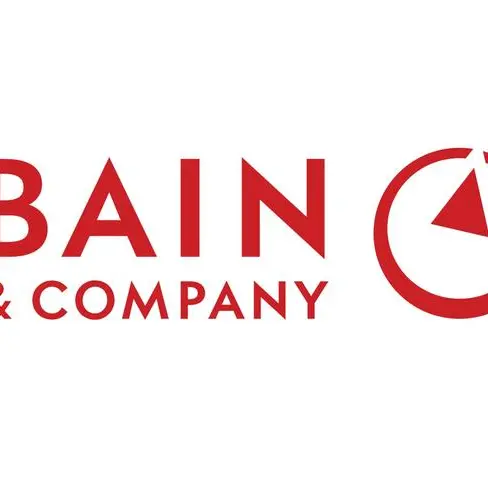Dubai, United Arab Emirates, 14 January 2013
Sara Yates, Global Currency Strategist at J.P. Morgan Private Bank, provides outlook for the currency market in Q1 2013, and looks across the macro, developed FX markets and the case for China in the year ahead.
· 2013 promises to be another year of loose monetary policy, but unlike 2012 there will be fewer downside risks. Growth in the US and China looks set to improve while the tail risk from the euro area has been substantially reduced by the creation of the OMT (Outright Monetary Transaction). This environment means three things for currencies: investors will continue to look for yield; they will be more comfortable in moving along the risk spectrum; and a currency's fundamentals will matter more.
· We expect "risk-on" currencies to be the top performers in 2013, especially in H2.
· EURUSD and GBPUSD are likely to face opposing headwinds: improving global sentiment will act as support, while weak growth in the UK and euro area is likely to drags on performance. We look for both to move largely sideways, with the EUR slightly outperforming GBP.
Macro Backdrop
Monetary policy is expected to remain extremely accommodative throughout 2013. The Fed has committed to keeping rates between 0-0.25% until unemployment falls below 6.5% and/or inflation rises above 2.5%. Neither outcome seems likely this year. Alongside standard monetary policy measures, central banks continue to use inventive policy measures to support global growth. The most common is quantitative easing whereby central banks expand the money supply by buying longer dated government bonds. These measures have helped drive the longer end of the yield towards historic lows.
Unlike 2012, we expect fewer downside risks in 2013. Recent economic data suggests that China has achieved a soft landing and that conditions will gradually firm in 2013. Conditions in the other engine of growth, the US, also look set to slowly improve in 2013. Perhaps even more important is the reduced tail risk from the euro area following Draghi's commitment to do "whatever it takes" and the creation of the OMT (Outright Monetary Transactions)."
What this means for developed FX in 2013
The USD, EUR and GBP:
Moves in EURUSD or GBPUSD are largely governed by changes in four key drivers: general risk appetite, interest rate differentials, country specific risk and oil prices:
Risk appetite - Improved risk appetite is a positive for EURUSD and GBPUSD. But as neither have a strong relationship with risk, they will not benefit from firmer sentiment as much as "risk-on" currencies such as the SEK and MXN.
Interest rate differentials - All three central banks are likely to keep monetary policy loose for sometime. This suggests little impetus from this driver for EURUSD or GBPUSD.
Oil - We are constructive on oil and are looking for a move to $120 per barrel by the end of 2013. This will be a modest positive for EURUSD and GBPUSD.
Specific risk - As euro area progress continues we expect the risk premium on all European currencies to fall v USD. Within Europe, the EUR is likely to be the largest beneficiary of a fall in the European risk premium and GBP the biggest loser as intra European safe haven flows unwind. The UK's weak fundamentals mean the risks are skewed towards the UK losing its cherished AAA sovereign credit rating. This would add a further weight on GBP v EUR.
"Risk-on" currencies to do well, but pick carefully
2013 promises to be a year of loose monetary policy and less systemic risk. And as market confidence grows, we expect investors to feel more comfortable in taking on a larger amount of risk in their search for yield. In other words, we look for "risk-on" currencies to outperform.
But investors need to pick carefully. Less systemic risk means correlations are falling and that a currency's fundamentals will matter more. We expect cheap, "risk-on" currencies, with a positive real yield, good fundamentals, and a central bank not adverse to appreciation to see the strongest performance as global prospects firm.
Overview
· MXN: The MXN has the strongest relationship with global market sentiment as well as benefiting from an upturn in US economic prospects (we expect both to look substantially better in H2). At the same time it still remains a cheap currency, meaning it has room to appreciate as well a positive real yield and a central bank who has shown little signs of intervening,
· EMEA: In H1, we expect RUB to perform strongly supported by cyclical current account flows, our constructive view on the oil and the liberalisation of the OFZ bond market. We expect the PLN to do well in H2 once the rate cutting cycle has ended and global risk appetite firms.
· EM Asia: The KRW has a lot in its favour. It is one of the more sensitive Asian currencies to global sentiment and has a cheap valuation. We expect the large current account surplus and bond market inflows to continue to support the currency.
· Developed markets: Scandies look set to prosper in 2013. Norges Bank is committed to raising rates in 2013, which alongside the NOK's link to oil will support the NOK this year. SEK is also likely to prosper as it is the currency of a small, open economy that does well in an environment of risk on. Of the two, we expect the NOK to outperform in Q1. However, the NOK is not as sensitive to global risk as the SEK. Moreover, the Norges Bank is more sensitive to currency strength than the Riksbank. We expect the NOK to underperform the SEK as the year progresses.
· CLP: Copper is our most bullish call in 2013 and provides another feather in the cap for the CLP. In addition to offering investors the highest real rate in our currency universe, a strong sensitivity to an improvement in global sentiment and a decent valuation, CLP also has the strongest connection to changes in the copper prices of the commodity currencies.
Update on China
Increased expectations of a near term band widening have caused USDCNY to consistently trade towards the bottom of its policy range (+/- 1% deviation from the 6.3 fixing) recently. With modest inflationary pressures, we do not expect the band to be widened over the coming weeks. However, a widening of the band later in the year alongside greater liberalisation of the exchange rate regime, would be consistent with the Chinese authorities' long-term aim of a fully convertible capital account. We look for a 1-2% appreciation of the CNY in 2013. As we expect this to be in the context of a wider band, we also look for more cyclicality in USDCNY.
-Ends-
About J.P. Morgan Private Bank
With client assets of $852 billion, J.P. Morgan Private Bank is a global financial leader providing advice and customized solutions to wealthy individuals and their families. The firm leverages its broad capabilities in investing, tax and estate planning, family office management, philanthropy, credit, and special advisory services to help our clients advance toward their own particular goals. For more than 160 years, the Private Bank's comprehensive and integrated approach, commitment to innovation and integrity, and focus on client service have made J.P. Morgan the advisor of choice to those of significant wealth around the world.
About JPMorgan Chase & Co.
JPMorgan Chase & Co. (NYSE: JPM) is a leading global financial services firm with assets of $2.3 trillion and operations in more than 60 countries. The firm is a leader in investment banking, financial services for consumers, small business and commercial banking, financial transaction processing, asset management and private equity. A component of the Dow Jones Industrial Average, JPMorgan Chase & Co. serves millions of consumers in the United States and many of the world's most prominent corporate, institutional and government clients under its J.P. Morgan and Chase brands. Information about JPMorgan Chase & Co. is available at www.jpmorganchase.com.
J.P. Morgan International Bank Limited, 1 Knightsbridge, London SW1X 7LX, is authorised and regulated by the Financial Services Authority. This material should not be regarded as research or a J.P. Morgan research report nor as including sufficient information to support an investment decision and is not intended as an offer or solicitation for the purchase or sale of any financial instrument. The investment strategies and views expressed herein may differ from the opinions expressed by other areas of J.P. Morgan including research. If you no longer wish to receive these communications, please contact your usual J.P. Morgan representative.
Press Contacts:
Active PR
Ketaki Banga
Tel: +971-4-3643085
Fax: +971-4-3904656
E-mail: ketaki@activepr.biz
Active PR
Chloe Geake
Tel: +971-4-4335226
Fax: +971-4-3904656
E-mail: chloe@activepr.biz
© Press Release 2013


















